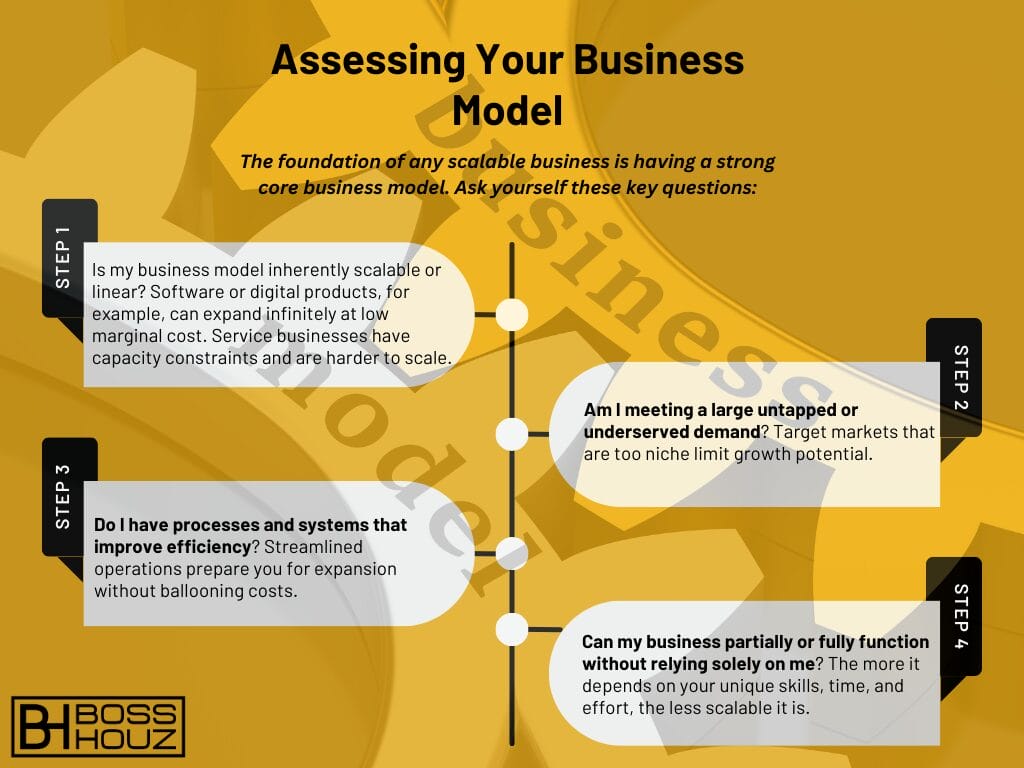Starting and growing a business from the comfort of your own home is an increasingly popular path for entrepreneurs. With low overhead costs, flexibility, and the ability to leverage online platforms, home-based businesses provide major advantages over traditional brick-and-mortar companies. However, one of the biggest challenges for home business owners is figuring out how to take their operations to the next level.
Unlike large enterprises with huge budgets and teams, scaling a home business requires creativity, resilience, and strategic thinking. The good news is that with the right approach, any passionate founder can expand their home-grown company into a thriving brand. This comprehensive guide will equip you with actionable tips, tools, and frameworks for sustainably scaling your home-based business.
Table of Contents
Understanding the Basics of Business Scaling
Before diving into tactical advice, it’s important to level-set on some key concepts related to business growth.
Scaling a business means expanding your company’s operations to increase profits and market share. This usually involves boosting revenues substantially without a proportional increase in costs. Effectively scaled companies can serve more customers, enter new markets, or launch additional products without facing the diminishing returns typically associated with rapid growth.
On the other hand, business growth refers to any increase in company size, revenues, or market reach. However, organic growth resulting from factors like population increase or inflation does not guarantee increased profitability or efficiency.
The key difference is that deliberate business scaling focuses on growing in a strategic and sustainable way that allows your home-based company to keep up with rising demand.
Evaluating Your Business’s Scalability
Not all companies are positioned for successful scaling, so the first step is assessing if your home business has potential for substantial expansion. Here are some key factors to evaluate:
Assessing Your Business Model


The foundation of any scalable business is having a strong core business model. Ask yourself these key questions:
- Is my business model inherently scalable or linear? Software or digital products, for example, can expand infinitely at low marginal cost. Service businesses have capacity constraints and are harder to scale.
- Am I meeting a large untapped or underserved demand? Target markets that are too niche limit growth potential.
- Do I have processes and systems that improve efficiency? Streamlined operations prepare you for expansion without ballooning costs.
- Can my business partially or fully function without relying solely on me? The more it depends on your unique skills, time, and effort, the less scalable it is.
Identifying Scalable Market Demands
It’s also crucial to understand your target customers and if the demand for your offerings can sustain scaled growth.
- Conduct market research to validate demand for your products/services. Growing trends suggest scalability.
- Ask existing customers if they know others who could benefit from your business. Referrals indicate scale potential.
- Evaluate if your offerings solve high-priority problems for customers in a market supported by macroeconomic tailwinds.
Developing a Scalable Value Proposition
Finally, analyze if your business delivers core differentiating value that customers will pay more for as you grow.
- Compare your solution to alternatives to assess competitiveness at scale.
- Identify your unfair advantage that’s hard for others to replicate. This could be proprietary tech, processes, special expertise etc.
- Quantify the tangible ROI your customers gain from your products/services.
Running through these evaluations provides objective insights into your opportunities for scalability.
Preparing to Scale Your Home Business
Once you’ve determined your home business has healthy scale potential, laying the operational groundwork is key.
Choosing the Right Business Structure


Your legal business structure impacts everything from taxes, liability, cash management, to how you can obtain financing. Sit down with both a lawyer and an accountant to discuss the optimal setup for your planned growth.
Here are some top considerations:
- Limited Liability Company (LLC) – An LLC separates your personal and company assets for liability protection while allowing pass-through taxes. This is a popular initial choice for home businesses aiming for growth.
- S-Corporation – This entity offers liability protection similar to an LLC but with different rules for taxation and profit distribution. Better suited for more mature, profitable businesses.
- C-Corporation – If raising VC funding, going public, or setting up an employee stock ownership plan (ESOP) is on your radar, a C-Corp is likely the best fit for your home business.
Pro Tip: No matter which entity you choose, follow proper corporate governance like holding annual shareholder/board meetings, maintaining capitalization tables, issuing stock certificates etc. This keeps you credible and scale-ready.
Legal Documentation & Compliance
- Draft shareholder agreements – These legally binding documents establish ownership interests, governance processes, equity vesting schedules etc.
- Secure necessary licenses & permits based on location/industry regulations. Don’t risk hefty fines down the road.
- Consider trademarks to protect your brand identity and intellectual property.
- Review insurance policies to ensure adequate general liability, D&O, E&O, cyber or other coverage suitable for your growth plans.
Handling these legal housekeeping items early allows you to focus on business expansion without worrying about compliance.
Managing Finances for Growth
Since scaling a business demands extra working capital and shoulders more risk, getting finances in order is non-negotiable before expanding.
- Delegate bookkeeping/accounting so you have clean financials. Using cloud accounting software gives real-time visibility.
- Work with a tax advisor experienced with home businesses to stay compliant as your company grows.
- Plan taxes from the get-go so you don’t end up with surprisingly high tax bills.
- Manage cash flow aggressively – issues like outstanding invoices or low margins can break a growing business.
Building a bulletproof financial system provides stability for tackling bigger challenges at scale.
Building a Strong Online Presence
Establishing credibility and discoverability online is essential when growing a home business targeting any customer demographic.
Creating a Professional Website
For any startup, an amateur “I made this site in my dorm room” vibe damages trust and authority. Invest in a professionally designed website with optimized UX.
Key elements for a trustworthy site include:
- Clean, uncluttered design showcasing your brand identity
- Easy navigation and seamless user experience
- Clear calls-to-action to drive conversions
- Compelling copy articulating your value proposition
- Prominent contact info and customer service access points
- Engaging images/video showcasing products or team
- Social proof elements like customer testimonials or success stories
Pro Tip: Ensure your website is mobile responsive for maximum reach. With Google now prioritizing sites optimized for mobile, non-responsive design can tank your rankings.
Leveraging SEO for Discoverability
You can have the smartest product and slickest site, but without traffic none of that matters. Organic search engine results drive over 50% of website traffic, so SEO is mandatory for scaling an online presence.
Start with foundational SEO best practices like:
- Researching and targeting relevant keyword phrases with decent search volume. Include these organically in page content.
- Crafting unique meta descriptions that compellingly summarize page content.
- Structuring content in an easy-to-scan hierarchy using formatting elements like headlines, subheads etc.
- Optimizing page speed and site architecture for strong mobile user experience.
- Generating inbound links via guest posts, partnerships etc to build domain authority.
Layering-in advanced tactics like local SEO then compounds results over time.
Pro Tip: Track SEO KPIs like click-through-rate, time on site, and conversion rate to optimize efforts.
Leveraging Social Media Presence
While social media started as merely community forums, platforms like Facebook and Instagram now drive significant website traffic and conversions via diverse organic and paid channels.
For home businesses, thought leadership and relationship-building on social media can particularly help personalities shine through and establish authority online.
Best practices for leveraging social media include:
- Consistently posting multimedia content aligned to brand voice/aesthetic
- Monitoring hashtags/keywords relevant to your audience for engagement opportunities
- Responding to comments, queries, and messages in a timely manner
- Implementing unique social campaigns like user-generated content drives
- Retargeting visitors or customers through slick ads
Pro Tip: Given increasing competition, explore newer platforms like TikTok for fresh audiences.
Building a professional digital footprint across multiple channels helps position your home business for sustainable scaling.
Strategies for Scaling Your Home Business
Once you’ve laid the operational groundwork, it’s time to focus on strategic decisions that form the blueprint for how you’ll grow.
Diversifying Your Product/Service Offerings
One proven tactic for scaling home businesses is to expand into complementary products, services or revenue streams. This mitigates risk from fluctuating demand cycles and also unlocks new customers.
Popular options include:
- Spinning-off higher margin offerings from existing capabilities e.g., info products from service expertise
- Bundling products/services into packages or memberships
- Creating business model extensions like a pet sitting service expanding into pet food/treat sales
- Licensing intellectual property like course content or software (especially effective for home businesses with unique IP)
- Exploring customization e.g., an Etsy shop offering personalized gift boxes along with handmade items
Ideally, building out a portfolio of strategically interlinked offerings creates built-in cross-selling opportunities while diversifying income streams.
Pro Tip: When diversifying, resist spreading yourself too thin. Limit expansion to closely related offerings for operational simplicity.
Streamlining Operations For Increased Efficiency
Creating smoothed-out, low-touch operations through automation and process refinement is table stakes for scaling without ballooning headcount and costs.
Leveraging Business Process Automation
Automating repetitive tasks is mandatory for freeing up founders’ bandwidth as transactions and operational complexity increases.
Common automation options include:
- Accounting: QuickBooks, Xero
- CRM / Sales: HubSpot, Salesforce
- Marketing: MailChimp, Semrush
- Operations: Zapier, IFTTT
- Productivity: Slack, Trello
Pro Tip: When reviewing automation tools, validate integration capabilities to streamline workflows across platforms.
Process Optimization & Refinement
Equally crucial is scrutinizing processes for unnecessary complexity and waste. Document all key workflows using swim lane diagrams to visually optimize steps.
Ask probing questions like:
- Where are bottlenecks creating slowdowns or rework?
- What redundant approvals or sign-offs can I eliminate?
- Are responsibilities clearly defined at each step?
- Can I introduce parallel processing for faster execution?
Be ruthlessly honest. If a process step doesn’t directly create customer value, cut it without mercy.
Pro Tip: Don’t compromise on compliance or ethics in the name of efficiency. Certain steps like legal/regulatory reviews should not be circumvented.
Hiring Smartly: Outsourcing vs Employees
Very few founders scale solo. Knowing when and how to delegate is imperative, but handing over control isn’t easy for many business owners.
Carefully weigh bringing on traditional employees vs outsourcing. Employees allow more direction and control but also involve substantial fixed costs and management obligations. Outsourcing offers flexibility, specialization, and saves money but reduces oversight.
Best Practices for Outsourcing
Independent contractors offer targeted capabilities without salary or hiring/HR headaches. Standardize outsourcing to maximize ROI:
- Vet specialists extensively – review portfolios, check references, interview thoroughly etc. Domain expertise is critical.
- Establish detailed SOWs – unambiguously document deliverables, timelines, approvals protocol etc in a formal Statement of Work.
- Implement status tracking – maintain up-to-date project boards and set periodic check-ins to catch issues early.
- Build long-term relationships – find outstanding performers willing to scale capabilities as your needs grow.
Pro Tip: When outsourcing complex business functions, work with specialized agencies vs individual freelancers for greater continuity.
Growing an In-House Team
Despite higher costs, core team building is inevitable at certain growth milestones.
Optimize hiring by:
- Documenting repeatable roles – identify recurring skills where dedicated internal capacity makes sense
- Creating scalable org structures – plan reporting lines and spans of control suitable for different growth levels
- Building sourcing pipelines – leverage both proactive and passive channels to attract qualified candidates
- Interviewing efficiently – develop structured, competency-based interview practices to quickly identify top talent
- Onboarding thoroughly – ensure new hires integrate smoothly through tailored 90-day onboarding plans
Pro Tip: Use fractional hiring for flexibility. Bring certain roles on as part-time employees or job share arrangements.
Carefully scaling your team preserves culture and hit hiring targets cost effectively.
Financial Strategies for Funding Growth
For most bootstrapped founders, figuring out financing is one of the toughest roadblocks when attempting to scale. Beyond bootstrapping harder, here are some viable options:
Securing External Funding
Seeking structured risk capital from external sources is the most traditional route to scale rapidly. Common sources include:
VC funding – Venture capital firms provide multi-million dollar checks to high-growth startups in exchange for equity stakes. Extremely competitive so ensure you have traction first.
Angel investors – Typically high net worth individuals willing to back early stage ventures. Get introductions through your network or pitch events.
Bank loans – Traditional banks offer small business loans or lines of credit based on personal credit scores and business performance.
Crowdfunding – Online platforms like Kickstarter or Indiegogo let you raise smaller amounts from a wider pool of backers. Great for community building.
Grants – Government and nonprofit grants help entrepreneurs from underrepresented demographics. Amounts and eligibility varies.
Pro Tip: Understand the fine print before taking any outside funding. Investors come with expectations and pressures around growth and exit timelines.
Pricing Strategies for Growth
Beyond raising funds, optimizing pricing strategies helps boost revenues to re-invest.
Common pricing models include:
- Cost Plus – Base price on costs plus reasonable profit margin goal
- Value-based – Price based on perceived value created for customer
- Dynamic – Frequently update pricing based on demand, segment etc
- Bundling – Offer discounted multi-product packages
- Freemium – Basic product free, advanced capabilities paid
Pro Tip: Avoid race-to-the-bottom discounting wars and communicate true value to justify pricing.
Smart leveraging of both internal and external funding sources helps fuel the engine for scaling your home-grown operation.
Marketing For Scalability
Pouring money into marketing fails if the foundation isn’t solid. But once operationalized, scaling through creative growth hacking distinguish runaway successes.
Leveraging Content & SEO
Scalable inbound marketing starts with targeted content that organically attracts relevant audiences.
- Map content to buyer journeys – Fill awareness, consideration + decision stage information needs
- Deliver truly useful advice – avoid overly promotional or self-serving content
- Produce diverse formats – Support different learning styles with blogs, videos, tools etc
- Promote content assertively – Repurpose across social media, email, remarketing ads etc
- Track engagement – Connect content performance to lead gen and sales data
Pro Tip: Enhance discoverability by pursuing long-tail keyword opportunities where less competition exists.
Exploring Paid Acquisition Channels
Once you’ve built a comprehensive content ecosystem, paid ads can accelerate exposure.
Proven options include:
- Search ads – Bid on commercial keywords aligned to products for targeted traffic
- Social promotions – Run lead gen offers or special deals through Facebook/Instagram
- Display retargeting – Remarket site visitors through banners on other sites
- Affiliate marketing – Have others promote your offerings for commission on sales
- Influencer marketing – Pay individuals with audience influence to feature your brand
Pro Tip: Ensure your sales process and margins can sustain the customer acquisition costs prior to aggressive paid spends.
Optimizing Your Sales Funnel
Driving traffic means nothing if visitors don’t convert. Rationalize your conversion path for frictionless scaling.
- Offer incentives – Lead magnet gated offers encourage email sign-ups
- Nurture leads – Setup drip campaigns to build relationships before sales outreach
- Retarget abandons – Win back prospects who left with personalized messaging
- Test messaging – A/B test copy, pricing models and offers
- Analyze analytics – Identify sales funnel leakages impacting conversions
- Listen to customer feedback – Fix pain points through surveys, NPS or reviews
Pro Tip: Respect visitors’ time and frequency cap retargeting efforts across devices and channels.
Sustaining Scaled Growth
The hallmark of enduring, successful companies isn’t rapid growth but maintaining momentum long-term. Here are some best practices for staying resilient.
Monitoring Performance & Operational Health
Like mapping vitals during a hospital stay, closely tracking metrics prevents nasty surprises.
Critical KPIs include:
- Sales Velocity – Monthly Recurring Revenue, Average Order Value, Customer Lifetime Value trends
- Profitability – Contribution margin, Net Margin, Return on Ad Spend
- Operational – Lead conversion rates, sales cycle length, customer onboarding drop off
- Experience – Customer satisfaction, Net Promoter Score, churn rate
Pro Tip: Look beyond vanity metrics like web traffic or social media followers that don’t directly impact commercial outcomes
Sure, happy to continue!
Adapting to Market Changes
Complacency kills scaling. Continuously stress test your model against market shifts to avoid being blindsided.
- Analyze the competitive landscape – Research new players, substitute products, indirect threats etc.
- Regularly validate demand – Use surveys, interviews etc to confirm market problems remain unsolved
- Identify emerging consumption preferences – Notice Signals like changing social conversations or complaint themes
- Test innovations proactively – Pilot new ideas before required to stay ahead
Pro Tip: Instill a culture embracing productive paranoia across the team to avoid denial when signals weaken.
Overcoming Operational Challenges
Despite best efforts, unforeseen scaling problems still ambush seasoned founders.
Common pitfalls include:
- Surging lead volumes overwhelming sales capacity
- Customer support issues from shoddy frontline hires
- Supply chain shortages or logistics costs neutralizing margins
- Tech limitations throttling ability to enter new geographies
- Poor financial planning forcing infusions despite hockey stick revenue growth
Avoid knee jerk reactions. Methodically diagnose root causes using frameworks like the 5 Whys before actioning solutions.
Pro Tip: Codify institutional knowledge so resolutions can be replicated instead of relearning the same lessons.
Future Trends Impacting Home Business Growth
While focusing on the road ahead, also keep an eye on the horizon scanning for threats and opportunities.
Leveraging Emerging Technologies
New technologies will shape home business capabilities over the coming decade. Prepare to leverage:
- AI to eliminate guesswork – Chatbots for customer support or product recommendations based on data
- Automation to drive efficiency – Manufacturing via 3D printing or warehouse robotics streamlining logistics
- AR/VR to enable virtual experiences – Increase reach of services using spatial computing
- Blockchain for transparency – Cryptocurrency payments or supply chain tracking on distributed ledgers
Pro Tip: Join beta programs run by startups building cutting edge solutions for early adopter advantages.
Incorporating Sustainability
Today’s values-based consumers demand ethical practices beyond profits. Integrate:
- Eco-friendly materials and processes throughout operations and supply chains
- Commitments to equity & inclusion in hiring, leadership and community engagement
- Social good elements like donating a % of profits or supporting related causes
Pro Tip: Brand purpose must align authentically to who you are instead of superficial virtue signaling.
The home businesses that will scale successfully over the next decade keep one foot planted firmly in operational excellence of today while stepping boldly into opportunities of the future.
Wrapping Up Scaling Your Home-Based Business
I hope this guide provided an exhaustive playbook covering all aspects of strategically scaling your homegrown business.
Remember, effectively scaled companies reimagine the possible, challenging assumptions of limitations while grounding growth in customer needs.embark on this thrilling rollercoaster journey of entrepreneurship with equal parts courage, creativity and obsession with sustainable value creation.
At Boss Houz, we live and breathe the hustle – reach out anytime for 1:1 guidance on unlocking your startup’s growth trajectory or download our free eBook here for more tips!








